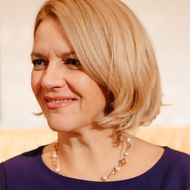A Market of a Billion Opportunities: HSE Experts on Doing Business in India

The rapid growth of India’s economy and its predominantly young population present unprecedented opportunities for Russian businesses. However, success in this vast market requires a deep understanding of its internal diversity, as well as cultural and legal nuances. These issues were the focus of the business session ‘India: A Market of a Billion Chances. How to Succeed,’ organised by the expert club of the Eastern Perspective programme at the HSE Faculty of World Economy and International Affairs.
Mapping Success: Where to Begin?

Dmitry Chubarov
Opening the session, Dmitry Chubarov, Deputy Director of the HSE Marketing Communications Office, emphasised a fundamental paradox of the Indian market: its immense potential is paired with equally vast internal differences. ‘India is not a monolith but rather a patchwork of diverse nationalities, religions, cultures, and levels of economic development,’ he noted, drawing attention to the crucial issue of choosing the right location.
Olga Kharina, a leading Indologist at the Faculty of World Economy and International Affairs and lecturer in the Eastern Perspective programme, identified the most favourable regions for Russian businesses to enter. At the top of the list is Gujarat, a western state whose capital, Ahmedabad, is renowned for its business-friendly environment. The region boasts favourable legislation, political stability, and active support for entrepreneurs from the state government. Gujarat is a recognised fintech hub and has a strong educational infrastructure, making it an optimal choice for most business sectors.
Another highly attractive region is Karnataka, often referred to as India’s southern Silicon Valley, with Bangalore as its capital. It is a global hub for IT, digital technologies, and innovative start-ups—ideal for companies working in high-tech industries, software development, and R&D.

Olga Kharina
The expert also highlighted regions with higher business risks. The most populous state, Uttar Pradesh, has limited access to digital resources and is known for its high levels of bureaucracy and corruption. Bihar, another populous state, suffers from political instability, which creates further obstacles for doing business.
‘For Russian entrepreneurs looking to minimise risks and financial losses, I strongly recommend beginning their journey in India in successful states like Gujarat or Karnataka, where robust support mechanisms for foreign businesses are already in place,’ Olga Kharina concluded.
Goldmines of Opportunity: Which Indian Industries Hold the Greatest Promise for Russian Businesses?
Responding to a question from Dmitry Chubarov about the most attractive sectors, Olga Kharina identified several high-potential areas for Russian companies looking to enter the Indian market.
First and foremost is agribusiness and the food industry. A significant share of India’s population is employed in agriculture, creating strong demand for solutions that improve crop yields, climate resilience, and the digital transformation of the agro-industrial complex. A niche market also exists for the production and export of popular Russian products such as ice cream, Medovik cake, and Alenka sweets. Another promising direction is setting up local production of frozen fruits, berries, and jellies for both the Indian market and export back to Russia.
Secondly, healthcare and medicine offer vast opportunities. The country faces a severe shortage of doctors relative to its population, fuelling demand for both traditional healthcare services and innovative solutions in telemedicine and online consultations, including mental health support.

The third area is tourism. There is notable potential in promoting inbound tourism—attracting Indian travellers to Russia—through the development and marketing of specialised travel agencies and online platforms tailored to Indian consumers.
The fourth promising track is education. Interest in learning Russian language and literature is growing in India. This opens up space for launching educational programmes, language courses, and online learning platforms.
Additionally, there are significant opportunities in the consumer goods sector—particularly for producers of clothing made from traditional fabrics that offer good value for money; eco-friendly goods such as candles and soaps with distinctive natural fragrances; affordable, locally adapted toothpaste and household cleaning products; and food items tailored to Indian tastes.
The Art of Marketing: How to Win Over the Indian Customer
Success in the Indian market hinges on understanding the specific features of local communication and marketing practices. English is sufficient for working with large and medium-sized businesses in developed states, but in regions dominated by local languages (such as Telugu, Bengali, Tamil, and others), product localisation—including translation and culturally adapted marketing—is essential. ‘This can be a major competitive advantage,’ Olga Kharina emphasised.
She also noted that Indian consumers are deeply influenced by the vibrant imagery of Bollywood. Visual appeal, colourful packaging, and clear product positioning that communicates unique benefits—such as quality, usefulness, and affordability—are crucial. Effective advertising is essential across all demographic segments. India’s youth, the core of the population pyramid, is highly active on social media and video platforms, and heavily influenced by influencers and bloggers.

It is also critical to factor in the wide disparity in incomes. For the less affluent and the middle class, price-to-quality ratio is a decisive factor. Urban dwellers are accustomed to digital services (delivery, ride-hailing, e-commerce), trust influencers, and expect convenience. In contrast, rural consumers are more price-sensitive, require information in their local language, and tend to value and support locally produced goods (such as spices, vegetables, and handmade crafts). Notably, even small village vendors widely use digital payments via QR codes.
India has a well-developed ecosystem of both international (Amazon) and domestic (Flipkart) marketplaces, as well as regional digital platforms. Promoting products through these channels, and via food delivery apps such as Swiggy and Zomato, can be an effective strategy. However, choosing the right platform requires thorough knowledge of the target audience.
Market Entry Strategies: How to Start Without Burning Out
Olga Kharina warned against attempting to enter the market independently without a firm grasp of its specifics: ‘Overwhelmingly, such attempts end in failure and carry high risks, both financial and reputational.’ She proposed two primary, reliable entry routes.
The first and most preferable option is to set up a joint venture. This involves finding a trusted, reliable local partner who understands the regional or sector-specific landscape, has lobbying capabilities, and is familiar with government support programmes (such as tax incentives and financial assistance). Such partners should be sought through official channels: trade missions, industry associations, and recommendations from experts involved in the Eastern Perspective programme. ‘If you are looking for reliability, do not place your trust in the first person you meet. Fraud is widespread,’ the expert warned.
The second viable entry strategy is hiring a local consultant or agent. This person is not a business partner but someone with in-depth knowledge of the local market, connections within a particular state’s government, and an understanding of hidden pitfalls. Such a consultant can guide businesses through support programmes, the specifics of registration, and the practicalities of running operations in India.
The key risks that must not be overlooked are:
- Fraud—the risk is particularly high when choosing partners or suppliers blindly.
- Tax and regulatory complexity—taxation, labour laws, and wage levels vary significantly across states. Detailed research is crucial.
- Overdependence on suppliers—relying on a single supplier is extremely risky. It is vital to diversify contractors and have back-up options.
- Expecting quick profits—India is a long-term investment market. Entering with short-term expectations is a near-certain route to disappointment. Patience, readiness for long and hard work, and careful planning of multiple business models are necessary.
- Cultural and managerial differences—business practices that work in Europe or Russia may be ineffective or even harmful in the Indian context.
Eastern Prospective: A Toolkit for Thoughtful Market Entry
Professor Natalya Guseva, Academic Supervisor of the Eastern Perspective programme, gave a detailed overview of how the course equips entrepreneurs to face the challenges of entering the Indian market. Crucially, the programme is built on the expertise of professionals who have either operated businesses in India themselves or advised others to do so—including business coaches, senior executives from Russian and international companies, and members of the trade and industry section of the Indian Embassy in Russia.

Natalya Guseva
During the programme, participants study real case studies of both successful and problematic attempts by Russian businesses to enter the Indian market. ‘It is better to receive criticism and negative feedback during training than to suffer actual financial losses,’ Natalya Guseva remarked. Under expert supervision, participants develop a detailed plan for launching their business, product, or service in India.
The programme also provides concrete guidance on safeguarding assets, adapting business models to changes in legislation, and minimising potential risks.
Participants receive structured knowledge on:
- India’s national economy, market potential, and key players.
- The political, legal, and regulatory environment—from registration to taxation.
- Specific features of Indian business models and management culture.
- Demand analysis and competitive landscape.
- Marketing strategies tailored to the Indian consumer.
The course format combines masterclasses for interactive engagement with experts and online project presentations. A standout benefit is the opportunity to build professional connections with experts and potential trusted partners in India.
‘You will acquire a full foundation of knowledge to weigh up the pros and cons, assess your real competitive advantages in this market, and make an informed decision about whether—and how—to enter it safely and effectively,’ summed up Olga Kharina.
To conclude the session, Dmitry Chubarov invited interested entrepreneurs to register for personal consultations with the Eastern Perspective programme management to explore market opportunities and develop tailored entry strategies for India’s dynamic economy.
See also:
Eighth International U4U Online Seminar Unites Experts from 14 Countries
The HSE Online Campus hosted a two-day international U4U (Universities for Universities) seminar, which traditionally serves as a platform for exchanging expertise in online learning. This year, the event has reached a global scale, attracting international experts and representatives of universities from around the world. Together, they discussed key challenges and strategies for the development of online education. The online meeting was held in mid-November.
HSE University–St Petersburg Signs Three Cooperation Agreements with Leading Indian Universities
A delegation from HSE University–St Petersburg has signed cooperation agreements with key educational institutions in India during a visit to the country. Among the projects are new programmes for academic exchange and mobility.
‘India Can Be Very Colourful and Festive’
HSE University's Faculty of World Economy and International Affairs hosted a celebration of the Indian holiday Diwali, which symbolises the triumph of light over darkness and good over evil. Guests were immersed in the authentic atmosphere of India, learning about Diwali’s traditions and symbols, participating in national dances, and taking part in mehendi workshops, rangoli art with rice, and paper lanterns making. The event was organised as part of the ‘Holidays of the Peoples of the East’ project.
HSE University–St Petersburg to Create Joint Continuing Education Programmes with Indian Business School
A delegation from the Institute for Continuing Professional Education at HSE University–St Petersburg discussed new cooperation formats with the Indian Institute of Management Indore (India). The partnership opens up new opportunities for HSE University–St Petersburg to create interdisciplinary programmes with strong practical elements and immersion in the business cultures of the Asian region.
‘Everyone Who Sees HSE University on My CV Says: “You Must Be So Smart!”’
On October 9–10, the first-ever HSE International Alumni Reunion brought together graduates from various cohorts and programmes—now working in Russia and abroad—along with representatives of HSE University and its industry partners. The event included a tour of the campus, a business game, and a cultural festival. The participants exchanged experiences, reflected on their career paths, and discussed labour market challenges.
HSE University–St Petersburg and Indian Institute of Management to Launch Joint Seminar for PhD Students
Galina Shirokova, Director of the Strategic Entrepreneurship Centre at HSE University–St Petersburg and Doctor of Economic Sciences, held a series of seminars for students of the Indian Institute of Management in Indore (IIM—Indore). Plans are also underway to launch a joint educational project.
Environmental Regulation in Russia and India
In Schola’s latest instalment showcasing the winners of the International Academic Cooperation of HSE University competition, Aleksei Sorbale speaks about the project ‘Regional and Inter-Regional Associations in Norm-Building and Norm-Control in the Area of Environmental Regulation in Russia and India,’ carried out jointly with a research team from India’s University of Petroleum and Energy Studies (UPES).
‘I Wish Summer Were Quarterly’
Practicing and teaching yoga, chilling in Moscow parks, writing academic papers, travelling around Russia, and volunteering—these are only a few of the things HSE international students have tried over their summer break. Now, as they are getting back to studies, the students reflect on their summer experiences in academic work, professional development, travel, and leisure.
Ringing in the New Term
On September 1, campuses across Russia ring in the new academic year with the traditional ‘first bell’—flowers for teachers and welcomes for first‑years—while international students at HSE University share how studies begin in their home countries, from Ghana’s Akwaba week to China’s student club fair, the Democratic Republic of the Congo’s blue-and-white uniforms, and India’s Teachers’ Day.
HSE University–St Petersburg Students Study Diversity of Social and Climate Changes During Expedition to Himalayas
A team from HSE University–St Petersburg has returned from an expedition to the Himalayas. Together with colleagues from the universities of Delhi and Jammu, they studied the local mountain communities of the northern part of the famous mountain system.


